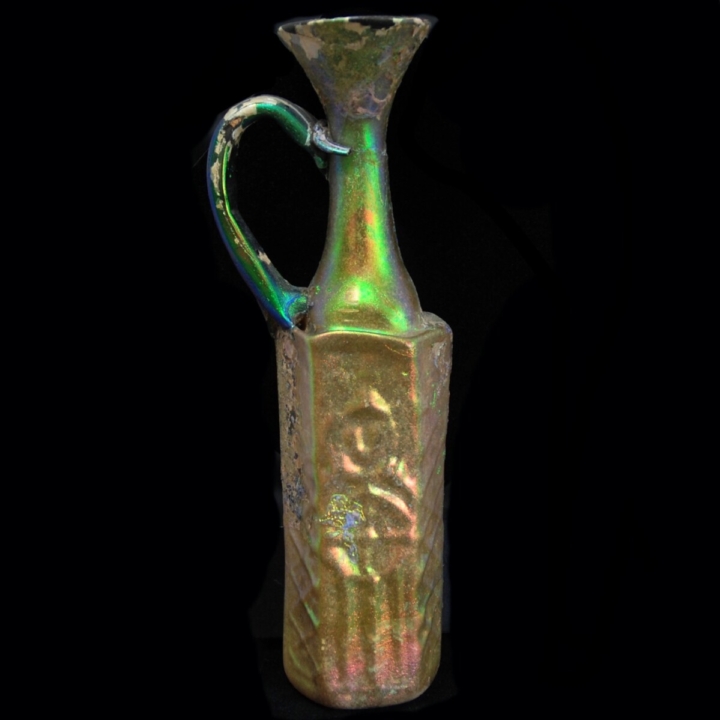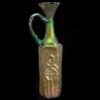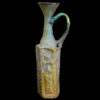Early Byzantine Hexagonal Glass Flask with Stylites
Culture: Byzantine
Period: 5th-7th century A.D.
Material: Glass
Dimensions: 24.8 cm high
Price: Sold
Ref: 3528
Provenance: From the estate of the French art dealer Evrard de Rouvre (1923-1979). Thence in the possession of his daughter Isabelle and her husband Francois van den Broek. Last in a family estate.
Condition: The decorative ribbon around the neck is only fragmentarily preserved, but the flask with a spectacularly shimmering irisation and intact.
Description: Important, hexagonal flask of yellowish green glass with Christian motives on all sides. The side right of the handle depicts a stylite with a habit. In front of him a cross inside a circle. These monks first appeared in the Eastern Church from the 4th century. They spent their lives on the capital of a column as a sign of special asceticism. The next side depicts a hashed band followed by ears of corn. The next side depicts a large cross pattée above an altar. Then again ears of corn followed by a hashed band. The bottom of the flask is inverted. The neck starts after a folded shoulder, tapering towards the top and ends in a large funnel-shaped spout. The separately worked out handle of opaque green glass reaches from the shoulder to the neck. Around the neck was a decorative ribbon which is only fragmentarily preserved. The flask with a thick, brightly shimmering irisation. Early Christian flasks such as the present one were made in Syria and served pilgrims as souvenirs for holy oil. They can be found in the most important museums around the world, such as in the British Museum with the registration number 1911,0513.1, in the Metropolitan Museum with the accession number 61.247, as well as in the Louvre also with a handle with the inventory number OA 6418. Although the Louvre dates the flask to later, i.e., 800-1000.





